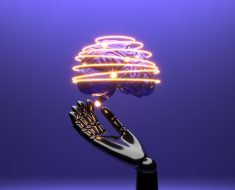![]()
Download a PDF of the paper titled Exploring the Dependence of Gas Cooling and Heating Functions on the Incident Radiation Field with Machine Learning, by David Robinson and 2 other authors
Download PDF
HTML (experimental)
Abstract:Gas cooling and heating functions play a crucial role in galaxy formation. But, it is computationally expensive to exactly compute these functions in the presence of an incident radiation field. These computations can be greatly sped up by using interpolation tables of pre-computed values, at the expense of making significant and sometimes even unjustified approximations. Here, we explore the capacity of machine learning to approximate cooling and heating functions with a generalized radiation field. Specifically, we use the machine learning algorithm XGBoost to predict cooling and heating functions calculated with the photoionization code Cloudy at fixed metallicity, using different combinations of photoionization rates as features. We perform a constrained quadratic fit in metallicity to enable a fair comparison with traditional interpolation methods at arbitrary metallicity. We consider the relative importance of various photoionization rates through both a principal component analysis (PCA) and calculation of SHapley Additive exPlanation (SHAP) values for our XGBoost models. We use feature importance information to select different subsets of rates to use in model training. Our XGBoost models outperform a traditional interpolation approach at each fixed metallicity, regardless of feature selection. At arbitrary metallicity, we are able to reduce the frequency of the largest cooling and heating function errors compared to an interpolation table. We find that the primary bottleneck to increasing accuracy lies in accurately capturing the metallicity dependence. This study demonstrates the potential of machine learning methods such as XGBoost to capture the non-linear behavior of cooling and heating functions.
Submission history
From: David Robinson [view email]
[v1]
Fri, 13 Oct 2023 18:00:02 UTC (565 KB)
[v2]
Thu, 18 Jan 2024 19:00:28 UTC (568 KB)



